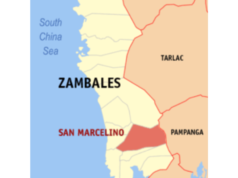Fish contributes animal protein to the human diet. Generally, fish protein is recognized as a valuable ingredient in a balanced diet. Where staple foods are available, a small quantity of fish can contribute significantly to increasing consumption by improving the overall palatability of the food.
In most of the developing countries, fish makes up 19% of the total animal protein consumption, notes the UN Food and Agricultural Organization. “This is over 4% of protein from both animal and plant origin,” it adds.
In recent years, more and more people are eating fish. In fact, most industrialized countries are now eating fish. It is no longer considered poor man’s source of meat. To health conscious people, fish is the best alternative to pork, chickens, and other meats.
That’s the reason why the oceans are no longer teeming with fish. “Before World War II, the world’s oceans were filled with fish to the point that nets would often rip due to too many fish,” notes Darrell D. Blatchley in an article he wrote for another local daily.
But thanks to freezer units and manufactured ice, the whole fishing industry completely changed. “For now, boats could stay out longer and keep more fish, creating larger boats and larger catches,” Blatchley points out. “And yet, as the years have gone by, the fish catch numbers and sizes have continued to drop.”
“Like the other vital resources such as forests, Philippine fisheries are about to collapse — a victim of the almost unabated plunder of the commons,” deplores Roy C. Alimoane, the director of the Mindanao Baptist Rural Life Center (MBRLC).
As defined, the commons encompasses unoccupied land and all waters which are considered God-given set of resources for the people to consume as much as needed. But these resources appear to have been abused to the point of exhaustion. Despite the country’s vast marine resources — 220 million hectares of coastal and oceanic territorial water area — the Philippines is now experiencing a shortfall in fish supply.
Take the case of the Davao Gulf, a key biodiversity area in the country. It is listed as one of the biodiversity hotspots in the world, according to the regional office of the Bureau of Fisheries and Aquatic Resources (BFAR). BFAR, a line agency of the Department of Agriculture, reported that Davao Gulf is the feeding ground for 11 species of cetaceans, which include sperm whales, killer whales, and bottle-nose dolphins. Not only that, it also serves as the nursing ground for endangered marine turtles.
In 2012, a study done by the regional office of the Department of Science and Technology found out that there has been a decline in fish catch in the Davao Gulf from 2000 to 2010. Based on the said study, the BFAR implemented a closed fishing season from June 27 to August 31 this year. The main objectives: to conserve marine resources and to secure the spawning period of pelagic fishes in the gulf.
The problem is nothing new. I had been reporting it since the 1990s yet, although not specifically on Davao Gulf.
Decline of fish catch was common in many parts of the country. And to think of, fish provides more than half of the protein requirements of most Filipinos. “Our fishery resources are beset with problems,” a BFAR official told me in 1996.
Fishery resources refers to inland (lakes, rivers, freshwater swamps, and fishponds), coastal and offshore waters.
The official enumerated several factors in the fisheries decline. But he singled out overexploitation as the primary culprit. Oceans are global common property resources, open, with few limitations to all takers.
Although fish stocks are a renewable resource, many of them are strained to the limit, he said. “Over the years, they have suffered from a widespread notion that the seas are inexhaustible and economic pressures that have encourage overexploitation,” he decried.
If we have to save the remaining fish in the oceans, Blatchley made this recommendation: “We should make a drastic change in the way we view the ocean — not as an endless supply of fish but as a garden needing protection.
It would take 3-5 years at least to undo the damage that has been done. That would be 3-5 years of no small-scale or large-scale fishing.” The destruction of coral reefs and the denudation of mangroves have further obfuscated the problem.
“If only the degraded 38,000 hectares of mangroves and 2,000,000 hectares of coral reefs were intact, an estimated 960,000 tons of fish could be produced each year,” a marine science professor disclosed in the late 1990s.
In the case of Davao Gulf, among those cited as the reasons for depleting fish catch were as follows: water pollution, destroyed fishing habitat, diminishing seagrasses, conversion of mangrove planting areas to recreational resorts, and poor fishing practices in the fish sites.
What the BFAR fail to include is climate change. “The level of impact varies widely and depends on the attributes of the fish species as well as on their regional specificity,” said the first assessment of the Intergovernmental Panel on Climate Change (IPCC).
Changes in ocean circulation, the UNsponsored body explained, may lead to the loss of certain populations or the establishment of new ones. “Many of the changes will be very unpredictable,” noted Panos Institute, an international research and information organization. “They will depend on local changes in climate and ocean currents.”
The matter of diminishing fish catch is not unique to the Philippines. “Newsweek,” in a cover story some years ago, declares: “The oceans are awash with too many fishing vessels, and the result is big trouble for fish and fishermen.”




